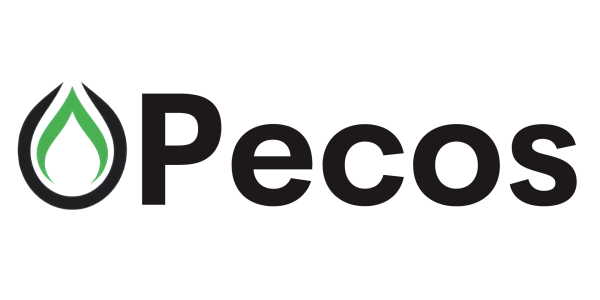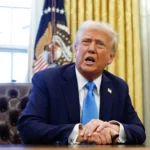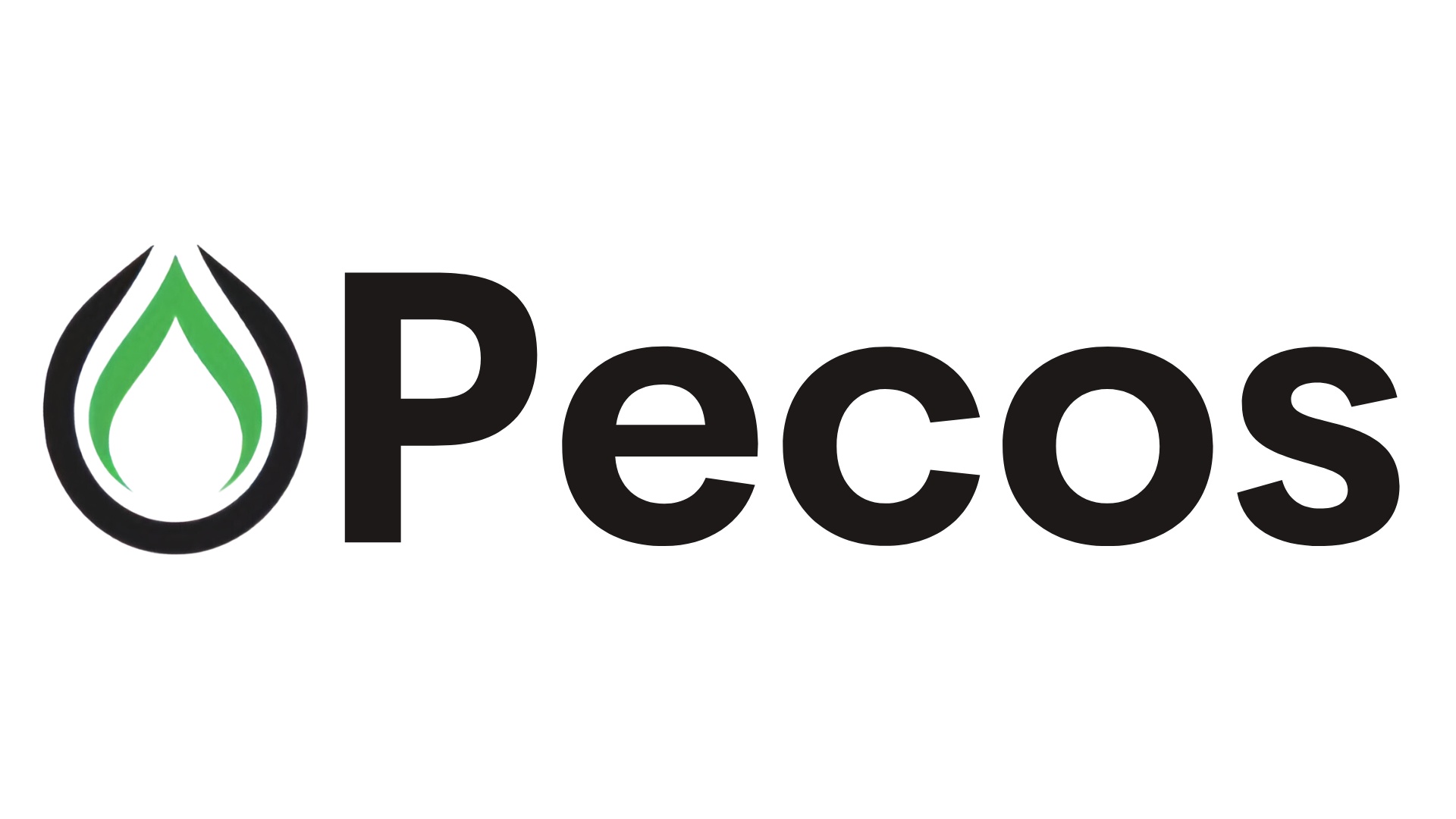Energy News Beat
The U.S. president signed a memo directing agencies to enforce existing sanctions on the country, but his statements suggest he’s open to talks.
Trump Returns to ‘Maximum Pressure’ on Iran
The U.S. president signed a memo directing agencies to enforce existing sanctions on the country, but his statements suggest he’s open to talks.

February 5, 2025, 6:04 PM Comment iconView Comments ()
U.S. President Donald Trump announced on Feb. 4 a return to the maximum pressure campaign on Iran, which is meant to starve the regime of cash as a way to curb its regional malfeasance and its nuclear program.
However—and this is becoming a pattern in everything Trump does, from his position on Ukraine’s real war to his self-inflicted trade wars—it’s not entirely clear what the president actually wants, how he means to achieve it, or even to what end.
U.S. President Donald Trump announced on Feb. 4 a return to the maximum pressure campaign on Iran, which is meant to starve the regime of cash as a way to curb its regional malfeasance and its nuclear program.
However—and this is becoming a pattern in everything Trump does, from his position on Ukraine’s real war to his self-inflicted trade wars—it’s not entirely clear what the president actually wants, how he means to achieve it, or even to what end.
On paper, the White House has taken a maximalist position against Iran, with the issuance of a presidential memorandum that highlighted all the bad things Iran does and ordered U.S. agencies and departments to do something about it.
Trump himself, though, has been tendering an olive branch to Iran, proposing a negotiated peace. When signing the memo in the Oval Office on Feb. 4, Trump said that maybe “everybody can live together” and insisted he did not want to use the new authorities he just signed. He reiterated that sentiment the next day on Truth Social, saying, “I want Iran to be a great and successful Country, but one that cannot have a Nuclear Weapon.” He added that he would like to see a “Verified Nuclear Peace Agreement.”
This apparent mixed messaging has led to some confusion.
“Now it is becoming clear that he does want to talk [to Iran], but what is his position?” asked Gregory Brew, an expert on oil and Iran at Eurasia Group, a consultancy. “The presidential memorandum lays out a much tougher position than what he said.”
The memorandum lays out all the reasons why the Trump administration thinks Iran should be hit with harder penalties, starting—as all U.S. administrations do—with the 1979 Islamic Revolution and continuing through Tehran’s role in destabilizing the Middle East and its nuclear program. What it does not do is lay out any concrete steps, sanctions, or other measures that would turn maximum pressure from a catchphrase into a policy.
The memo orders agencies and departments, such as the State and Treasury, to enforce existing sanctions, enjoins the United Nations to snap back sanctions that should apply when Iran breaches the protocols of the (since-disavowed) 2015 nuclear deal, and toys with the idea of interdicting illicit Iranian oil cargoes on the high seas, as has been done before. But nothing outlined in the memo amounts to serious pressure, let alone of the maximum variety.
That’s especially problematic because Iran’s lifeline is oil exports, to the tune of around 1.7 million barrels a day, more than 90 percent of which go to China.
“Unless the memorandum is followed up with new and creative sanctions to limit oil exports to China, then this doesn’t carry a lot of weight,” Brew said.
Even so, there is a lot that the Trump administration could do to nibble away at Iran’s ability to earn money from oil sales, which it uses to finance regional proxy groups, such as Hamas and Hezbollah, as well as build and maintain the uranium-enriching centrifuges that it would need to develop a nuclear weapon should it choose to do so. Preventing that from happening is among Trump’s highest priorities.
In late January, U.N. nuclear watchdog chief Rafael Grossi warned that Iran was “pressing the gas pedal” in terms of highly enriched uranium. Grossi said that Iran currently possesses around 200 kg (roughly 440 pounds) of uranium enriched up to 60 percent, which is much more than halfway to weapons-grade raw material for a nuclear bomb.
Under the 2015 nuclear deal, Iran agreed to limit enrichment to 3.67 percent—the kind of juicing that an old-school nuclear power plant might use. Back then, Iran was a year or more from having the bomb. These days, as then-Secretary of State Antony Blinken said a few months ago, Iran’s breakout time “is now probably “one or two weeks.”
But it would still take time for Iran to take highly enriched uranium and turn it into a missile-deliverable warhead. Experts estimate it could take Iran up to a year or more, though Tehran is reportedly exploring a faster route to building a functional weapon as it looks to reestablish deterrence in the face of the growing perception that the country is in its weakest position since 1979.
“Breakout time has for some time now been measured in days, rather than months or years. But having the fissile material required is only part of the process, and estimates for weaponization tend to range from 1-2 years,” said Naysan Rafati, the senior Iran analyst at the International Crisis Group.
There is still no evidence that Iran has decided to make a dash for the bomb, but more hawkish figures in the Iranian government have recently made calls for reassessing the country’s nuclear doctrine. Meanwhile, Iran’s diminished status due to Israel’s decimation of Hamas, Hezbollah, and Tehran’s own air defenses has raised questions as to whether Israel might pursue strikes on Iran’s nuclear facilities—perhaps with Trump’s blessing.
But Trump threw cold water on the prospect of preemptive strikes against Iran in a Truth Social post on Feb. 5. “Reports that the United States, working in conjunction with Israel, is going to blow Iran into smithereens, ARE GREATLY EXAGGERATED,” Trump said.
If the Trump administration is to put teeth into its maximum pressure campaign, it could start with actually enacting the SHIP Act, a piece of legislation passed last year that empowers the president to take action against buyers of Iranian oil, whether Chinese ports or Chinese refiners. Failing that, they could just stop the ships that transport the stuff or that offload it to other ships on the high seas as a way to get around sanctions.
“It’s simple. To drive Iran’s oil exports down, you have to cast a wider net and sanction more entities involved in that trade,” said Matthew Reed, the vice president of Foreign Reports, a Washington-based energy consulting firm. “That could be done using expanded authorities like the SHIP Act, which [former U.S. President Joe] Biden refused to do.”
There are hundreds of tankers, around 250 or so, that act for Iran as Russia’s shadow fleet does and which are ripe for U.S. designations. There are, even today, ship-to-ship transfers of illicit Iranian oil from big ships to smaller ones that are well off the radar—and also fair game. Trump’s presidential memo hints at those actions but does not implement them.
The big problem, when it comes to Iran, is that it is also a China problem, since Beijing’s independent and financially stressed refiners are the main buyers of Iranian crude. But Trump does not need another trade war with China, on top of the one he started five years ago and goosed over this past weekend with additional tariffs on Chinese exports to the United States.
So the trick is: How do you mess with public enemy number three without seriously angering public enemy number one?
“It sounds cliche, but sanctions really are a cat-and-mouse game,” Reed said. “The U.S. Treasury is the cat. It has to keep up.”
This post is part of FP’s ongoing coverage of the Trump administration. Follow along here.
Keith Johnson is a reporter at Foreign Policy covering geoeconomics and energy. X: @KFJ_FP
John Haltiwanger is a reporter at Foreign Policy. X: @jchaltiwanger
Foreign & Public Diplomacy |
Iran |
Middle East and North Africa |
Nuclear Weapons |
U.S. Economic Sanctions |
United States
Read More

How Weakened Is Iran, Actually?
Iran and its proxies have been devastated, but the Trump administration still has much to consider in its policy toward Tehran.

Will Trump Strike Iran or Strike a Deal?
The new administration faces a changed regional environment, which could make dealmaking more appealing than a renewed sanctions campaign.

Only Trump Can Go to Tehran
For a leader with fewer conservative bona fides, such a bold diplomatic initiative would be politically untenable.
Sign up for Editors’ Picks
A curated selection of FP’s must-read stories.
By submitting your email, you agree to the Privacy Policy and Terms of Use and to receive email correspondence from us. You may opt out at any time.
✓ Signed Up
You’re on the list! More ways to stay updated on global news:
FP Live
✓ Signed Up
World Brief
✓ Signed Up
China Brief
✓ Signed Up
South Asia Brief
✓ Signed Up
Situation Report
✓ Signed Up
Latest
Trump Returns to ‘Maximum Pressure’ on Iran
February 5, 2025
Trump’s Gaza Proposal Prompts Global Shock, Condemnation
February 5, 2025
How to Assess Trump’s Early Moves
February 5, 2025
Uncertainty Reigns in Bangladesh
February 5, 2025
Can Trump Power an AI Boom?
February 5, 2025
Latest
-
Trump’s Iran ‘Maximum Pressure’ Presidential Memo: What to Know
February 5, 2025
-
Trump Gaza Proposal: Foreign Leaders React to U.S. Takeover Idea
February 5, 2025
-
South Asia Brief: Uncertainty Reigns in Bangladesh
February 5, 2025
-
Trump’s AI Tech Push Faces Energy, Innovation Uncertainty
February 5, 2025
More from Foreign Policy
-

Russian President Vladimir Putin looks on during a press conference after meeting with French President in Moscow, on February 7, 2022. The Domino Theory Is Coming for Putin
A series of setbacks for Russia is only gaining momentum.
-

The container ship Gunde Maersk sits docked at the Port of Oakland on June 24, 2024 in Oakland, California. How Denmark Can Hit Back Against Trump on Greenland
The White House is threatening a close ally with a trade war or worse—but Copenhagen has leverage that could inflict instant pain on the U.S. economy.
-

Donald Trump speaks during an event commemorating the 400th Anniversary of the First Representative Legislative Assembly in Jamestown, Virginia on July 30, 2019. This Could Be ‘Peak Trump’
His return to power has been impressive—but the hard work is about to begin.
-

US Secretary of State Marco Rubio greets employees at the State Department in Washington, DC, on January 21, 2025. The National Security Establishment Needs Working-Class Americans
President Trump has an opportunity to unleash underutilized talent in tackling dangers at home and abroad.
Trending
Latest
-
Trump Returns to ‘Maximum Pressure’ on Iran
February 5, 2025
-
Trump’s Gaza Proposal Prompts Global Shock, Condemnation
February 5, 2025
-
How to Assess Trump’s Early Moves
February 5, 2025
-
Uncertainty Reigns in Bangladesh
February 5, 2025
-
Can Trump Power an AI Boom?
February 5, 2025
Sign up for World Brief
FP’s flagship evening newsletter guiding you through the most important world stories of the day, written by Alexandra Sharp. Delivered weekdays.
By submitting your email, you agree to the Privacy Policy and Terms of Use and to receive email correspondence from us. You may opt out at any time.
✓ Signed Up
The post Trump Returns to ‘Maximum Pressure’ on Iran appeared first on Energy News Beat.









